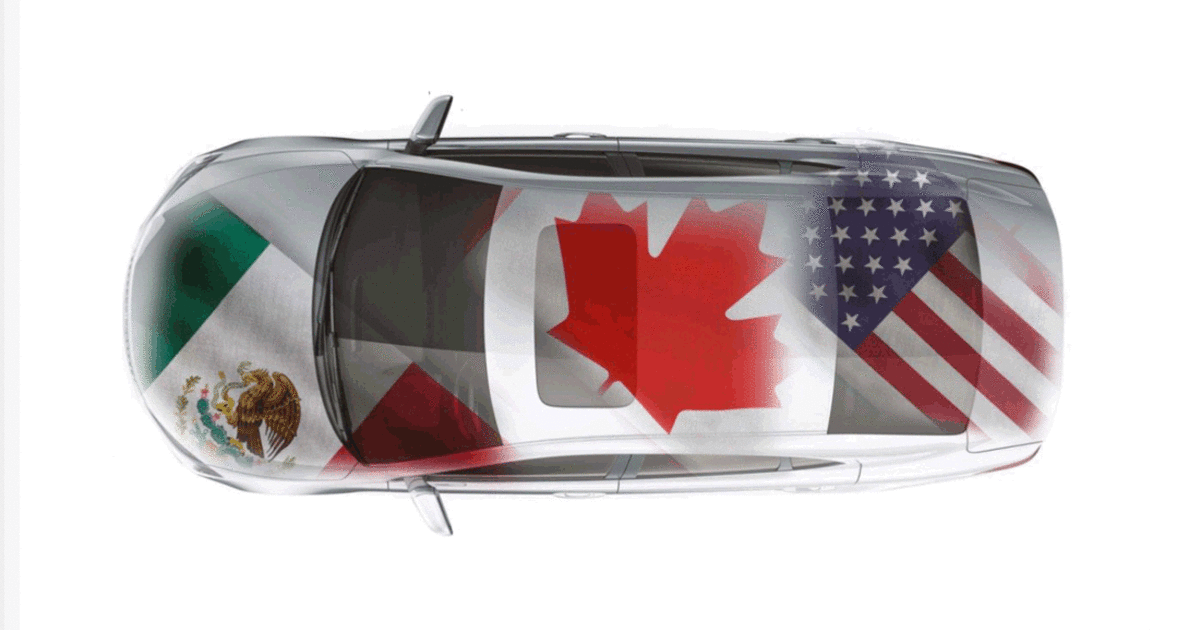
Mexico and Canada won a trade dispute with the U.S. over cars shipped across regional borders, potentially giving manufacturers more incentive to make auto parts in those nations.
The dispute-resolution panel set up under the 2020 US-Mexico-Canada Agreement made a preliminary ruling on Nov. 14, according to people familiar with the decision who declined to be identified because the report hasn’t yet been made public. The nations have an opportunity to give feedback on the report before a final version is issued within 30 days.
Mexico first sought the panel’s help in resolving the conflict in January. The dispute focuses on the nations’ differences over how to calculate the percentage of a vehicle that comes collectively from the three countries under the USMCA, which replaced the North American Free Trade Agreement, also known as Nafta.
The ruling could potentially benefit consumers and carmakers alike because it would allow the manufacturers to build more components — such as high-cost batteries — and assemble more cars in Mexico, where workers’ wages are a fraction of their US counterparts, said Sam Fiorani, vice president of global vehicle forecasting and a supply-chain specialist with AutoForecast Solutions LLC in Chester Springs, Pennsylvania.
Lower Prices
“Providing this amount of wiggle room in the calculations has the potential to lower prices for end-product and increase profitability as automakers seek out lower costs on some components,” Fiorani said in an interview. “Instead of lowering prices, the new rules increased the pricing of North American vehicles, as reaching the set domestic-content levels would be very difficult.”
Mexico’s economy ministry and the U.S. Trade Representative didn’t immediately respond to requests for comment.
A spokesperson for Canadian Trade Minister Mary Ng declined to comment until after the ruling is published. General Motors Co. and Ford Motor Co, which each have significant operations in Mexico and Canada, said the same.
Both Mexico and Canada believe the USMCA stipulates that more regionally produced parts should count toward duty-free shipping than the U.S. wants to allow. Motor vehicles are the top manufactured product traded between the three countries.
The U.S. had insisted on a stricter method than its neighbors say they agreed to, in order to tally the origin of core parts including engines in the overall calculation. That makes it harder for plants in Mexico and Canada to meet the new threshold of 75 percent regional content, up from 62.5 percent under Nafta, in order to trade duty-free.
For example, if a core part uses 75 percent regional content, and thus qualifies under that requirement for duty-free treatment, Mexico and Canada argued that the USMCA allows them to round the number up to 100 percent for the purposes of meeting a second, broader requirement for an entire car’s overall regional content. The U.S., however, didn’t want to permit rounding up, making it tougher to reach the duty-free threshold for the overall vehicle.
Cars are at the heart of the USMCA — with tens of billions of dollars traded each year — and Mexico viewed the U.S. demand by the Biden administration as an attempt to renegotiate a key aspect of the deal.